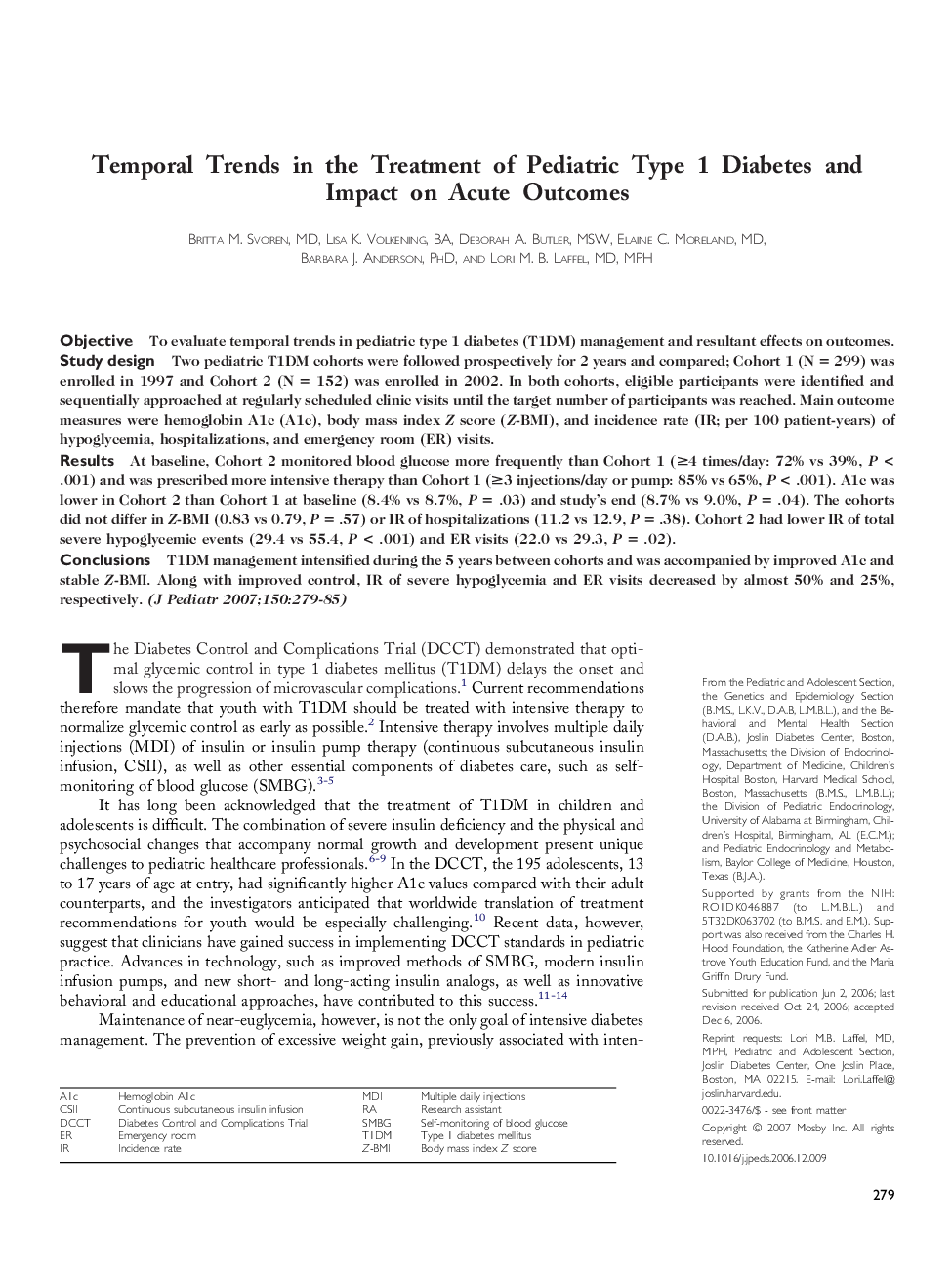| Article ID | Journal | Published Year | Pages | File Type |
|---|---|---|---|---|
| 4168758 | The Journal of Pediatrics | 2007 | 7 Pages |
ObjectiveTo evaluate temporal trends in pediatric type 1 diabetes (T1DM) management and resultant effects on outcomes.Study designTwo pediatric T1DM cohorts were followed prospectively for 2 years and compared; Cohort 1 (N = 299) was enrolled in 1997 and Cohort 2 (N = 152) was enrolled in 2002. In both cohorts, eligible participants were identified and sequentially approached at regularly scheduled clinic visits until the target number of participants was reached. Main outcome measures were hemoglobin A1c (A1c), body mass index Z score (Z-BMI), and incidence rate (IR; per 100 patient-years) of hypoglycemia, hospitalizations, and emergency room (ER) visits.ResultsAt baseline, Cohort 2 monitored blood glucose more frequently than Cohort 1 (≥4 times/day: 72% vs 39%, P < .001) and was prescribed more intensive therapy than Cohort 1 (≥3 injections/day or pump: 85% vs 65%, P < .001). A1c was lower in Cohort 2 than Cohort 1 at baseline (8.4% vs 8.7%, P = .03) and study’s end (8.7% vs 9.0%, P = .04). The cohorts did not differ in Z-BMI (0.83 vs 0.79, P = .57) or IR of hospitalizations (11.2 vs 12.9, P = .38). Cohort 2 had lower IR of total severe hypoglycemic events (29.4 vs 55.4, P < .001) and ER visits (22.0 vs 29.3, P = .02).ConclusionsT1DM management intensified during the 5 years between cohorts and was accompanied by improved A1c and stable Z-BMI. Along with improved control, IR of severe hypoglycemia and ER visits decreased by almost 50% and 25%, respectively.
